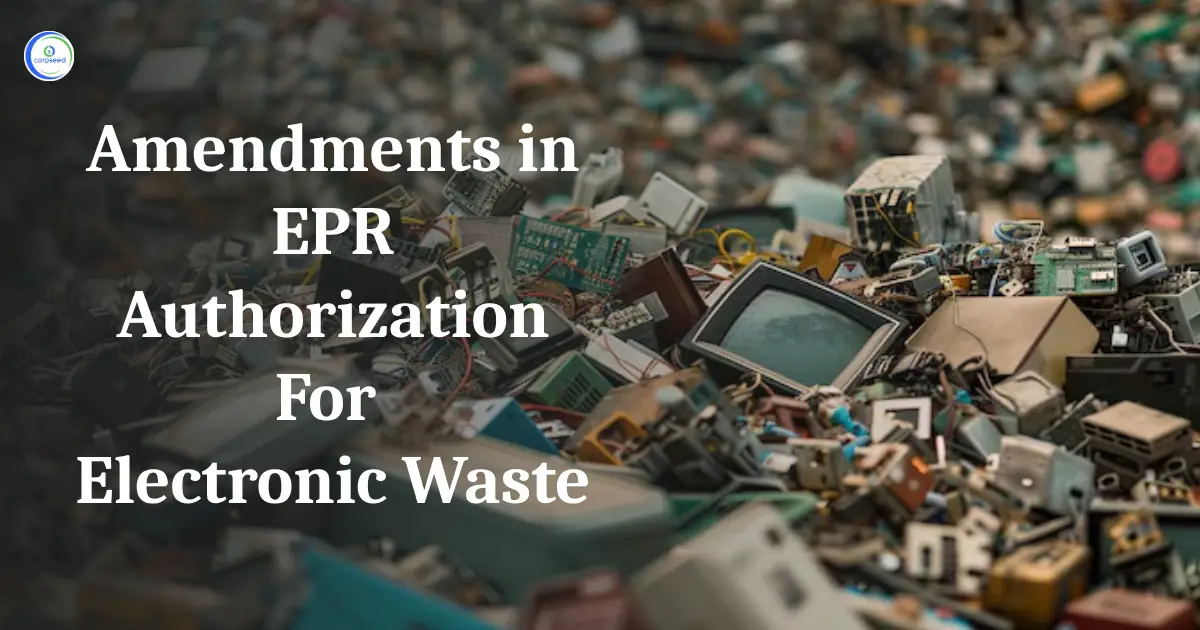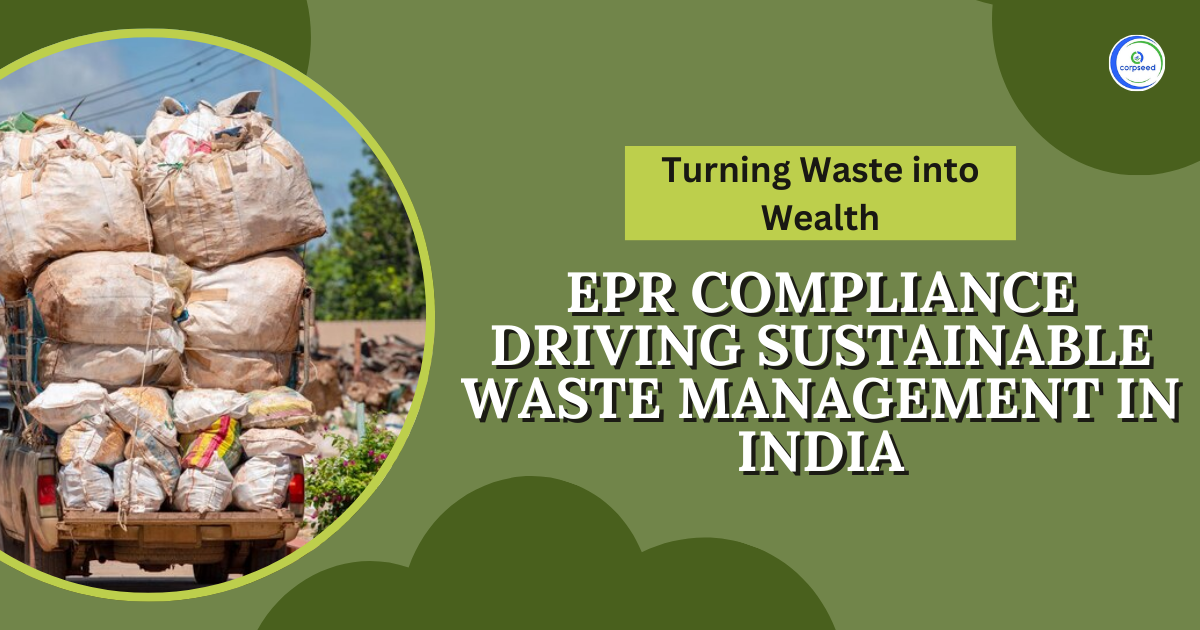Introduction: EPR Battery
Consolidating an extra item category or adjusting existing ones inside Extended Producer Responsibility (EPR) controls for batteries requires taking certain procedural measures to follow natural directions. EPR includes makers being held accountable-financially and/or physically-for managing post-consumer items.
If a company needs to present a modern sort of battery or modify the current item category in the Amplified Maker Obligation (EPR) plot, they are required to change their enlistment and compliance printed material with the suitable natural organizations. This frequently includes giving intensive item subtle elements, making any doubt collection and reusing objectives are met, and possibly altering budgetary back for waste transfer programs
These modifications are imperative for maintaining administrative measures and advancing economical natural endeavors by observing the whole life expectancy of batteries, from creation to transfer, in arrange to decrease natural harm.
Table of Contents
--------------Blog Contact Form-------------
What Battery Waste?
There will be a central online entrance for enrolment beneath the Battery waste management. Administration Rules. It will also give a framework for makers and recyclers/reprocessors to trade EPR certificates in arrange to fulfil producers' responsibilities.
The most recent directions command the lowest rate for fabric recuperation from utilized batteries and call for the consolidation of a particular sum of reused materials in the creation of unused batteries. These battery rules will without a doubt ensure that the Indian government's objective of progressing a circular economy is completely accomplished, with EPR being obligatory for all parties included.
These controls apply to people and businesses taking part in the whole handling of collecting, sorting, transporting, preparing, and reusing utilized batteries. The rules relate to each kind of battery, notwithstanding chemistry, shapes, estimates, weight, fabric cosmetics, and reason, such as electric vehicles, versatile, cars, and mechanical batteries.
What Are The Benefits Of Changing The Product Category In EPR Battery?
Making alterations to the item category inside EPR Battery directions has numerous advantages.
- Compliance with controls: Ensures taking after legitimate commands, anticipating fines and sanctions.
- Environmental Affect: Empowers moved forward taking care of battery transfer, minimizing environmental harm, and pushing for recycling.
- Market Adjustment: Grants businesses to dispatch modern items and react to moving showcase needs with more prominent efficiency.
- Corporate Duty: Makes strides in a company's picture by appearing committed to supportability and moral squander disposal.
- Enhanced fetched adequacy: Streamlines waste management methods and may lower costs in the future by improving reusing and squander administration techniques.
- Consumer Believe: Sets up certainty among buyers by illustrating the company's dynamic association in natural stewardship.
- Innovation: It advances the creation of items that are more economical and productive by the assembly of current natural benchmarks and expectations.
- Resource Recuperation: Empowers the recovery and reutilization of valuable materials from batteries, supporting the conservation of resources.
These focal points offer assistance to a company in accomplishing its natural targets, assembly compliance prerequisites, and remaining competitive in advertising.
What Are The Major Steps To Change The Product Category In EPR Battery?
Transitioning an item category inside the EPR Battery requires different steps to ensure adherence and fruitful consolidation into the administrative structure. Underneath are the four fundamental stages:
Evaluation and record-keeping:
- Product Assessment: Perform a comprehensive audit of the overhauled battery items, analyzing their chemical cosmetics, application, and transfer properties.
- Collect all required documentation: counting item details, security information sheets, and natural affect evaluations, to back up the category modification.
Notice of regulation:
- Apply: Get prepared and send an application or notice to a suitable natural specialist or EPR compliance body. This section by and large contains intensive subtle elements with respect to the item and its recently allotted category.
- Recheck Enlistment: Make changes to the company's enrollment data to incorporate the modern item category, guaranteeing all points of interest are exact and current.
Update to Compliance Plan:
- Recheck the Compliance: Technique by adjusting the current EPR compliance arrangement to incorporate the modern item category. This might involve altering strategies for gathering, reusing, and detailing to comply with the unused category's regulations.
- Financial Commitments: Reassess and alter any money-related commitments or charges connected to the modern item category to ensure satisfactory financing for waste under management and reuse efforts.
Execution and tracking:
- Internal training and communication: inner partners almost change to guarantee fruitful usage. This includes overhauling methods, instruments, and representative duties.
- Monitoring and Detailing: Make observing frameworks to keep track of how the modern item category is performing in terms of collection, reusing, and compliance. Reliably give overhauls to the management bodies when necessary.
Companies can effectively handle the move to a distinctive item category beneath the EPR system by following these steps, which offer assistance keep up compliance and bolster feasible waste management
What Is The Major Role Category In EPR Battery?
The primary responsibility for actualizing changes or increments to an item category in EPR Battery directions falls on the shoulders of battery makers or producers. They are in charge of:
- Regulatory Compliance: Making beyond any doubt the modern or overhauled item category meets all pertinent natural laws and controls. This incorporates making changes to enrollment data, giving required records, and getting consent from administrative bodies.
- Environmental Duty: Assessing and diminishing the natural impacts of the unused battery sort. Makers are required to make and put into activity fruitful plans for collecting, reusing, and arranging items in arrange to economically oversee the item lifecycle.
- Financial duty: Adjusting money-related gifts for squander administration and reusing programs to adjust with the overhauled item category. This ensures adequate subsidizing for the transfer of batteries at the conclusion of their lifespan.
- Customer communication: Informing shoppers of the changes and advertising exhortation on how to accurately arrange and reuse the modern sort batteries. This helps in empowering responsible buyer activities and ensuring the proficiency of EPR programs.
- Internal Coordination: Adjusting inside forms, and frameworks, and preparing programs to back the presentation of the modern item category. This includes planning item improvement, promoting, deals, and compliance groups with the reexamined EPR requirements.
- Monitoring and Announcing: Making frameworks to manage the execution of the modern item category with respect to collection and reusing rates. Reliably giving this data to administrative offices appears adherence and efficiency.
Producers have a fundamental part in maintaining administrative compliance, supporting natural supportability, and overseeing battery waste efficiently.
Conclusion
Changing or presenting a modern item category in EPR Battery controls is a pivotal method that requires an exhaustive assessment, notice to administrative specialists, upgrading of compliance plans, and fastidious execution and supervision. Makers are pivotal in this handle, ensuring compliance with natural directions, budgetary obligations, and proficient squander control.
Companies can guarantee adherence to directions, back supportability, and make strides in their capacity to adjust in the showcase by taking after these precise forms. Preferences include improved natural impacts, monetary investment funds, company responsibility, buyer certainty, and asset reuse. In conclusion, these activities offer assistance in the development of a more eco-friendly circular economy, in line with government and natural goals.
This portion of the site is for informational purposes only. The content is not legal advice. The statements and opinions are the expression of author, not corpseed, and have not been evaluated by corpseed for accuracy, completeness, or changes in the law.
BOOK A FREE CONSULTATION
Get help from an experienced legal adviser. Schedule your consultation at a time that works for you and it's absolutely FREE.





.webp)



